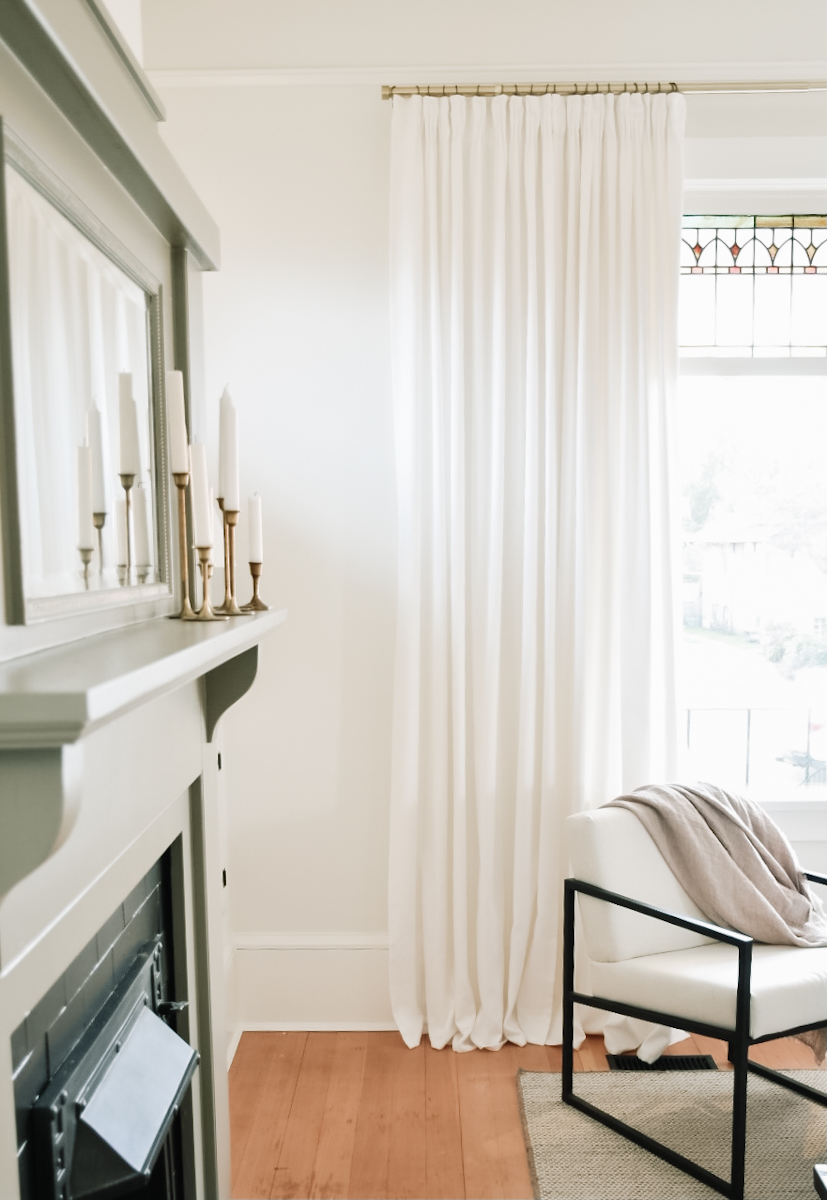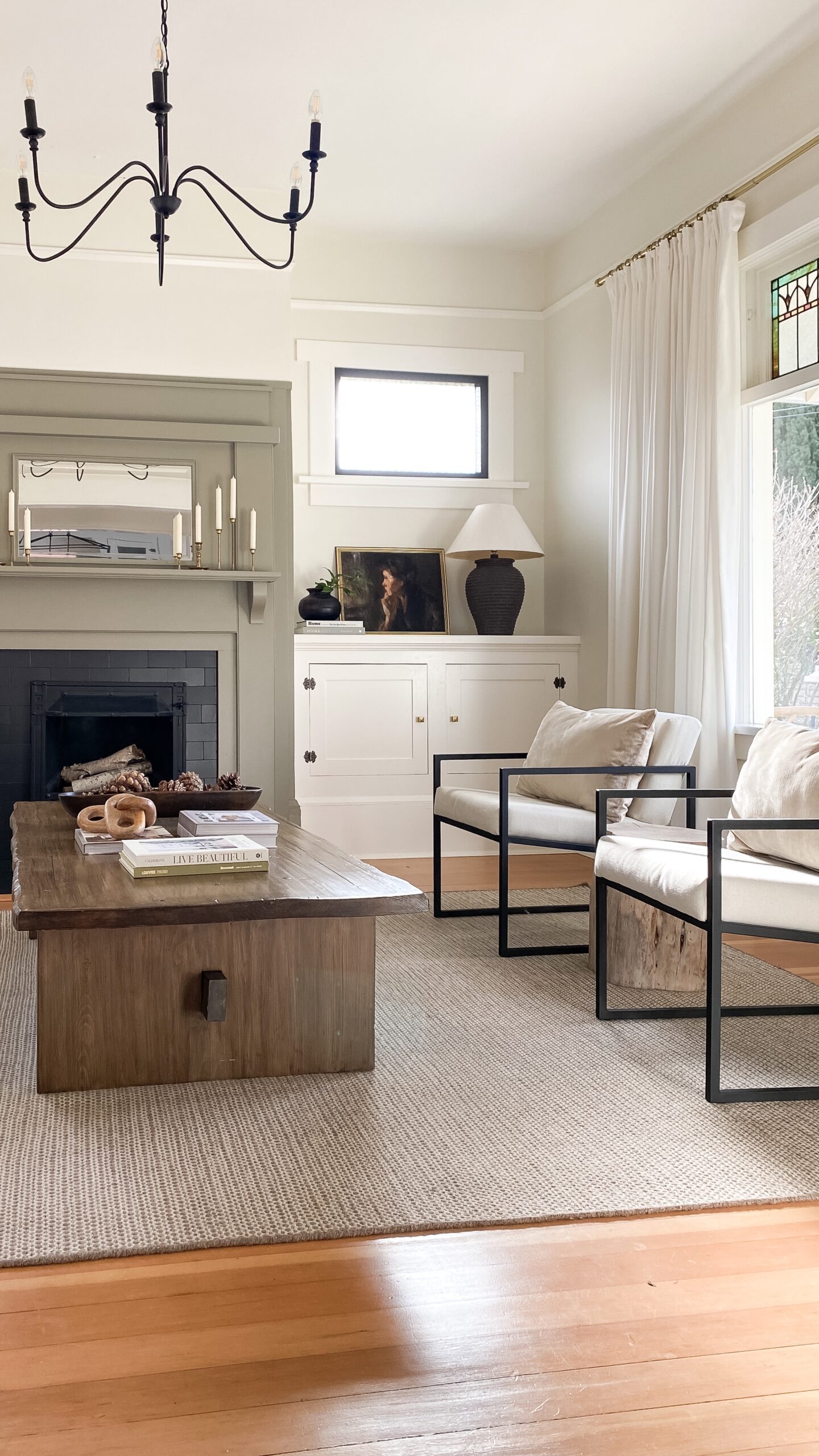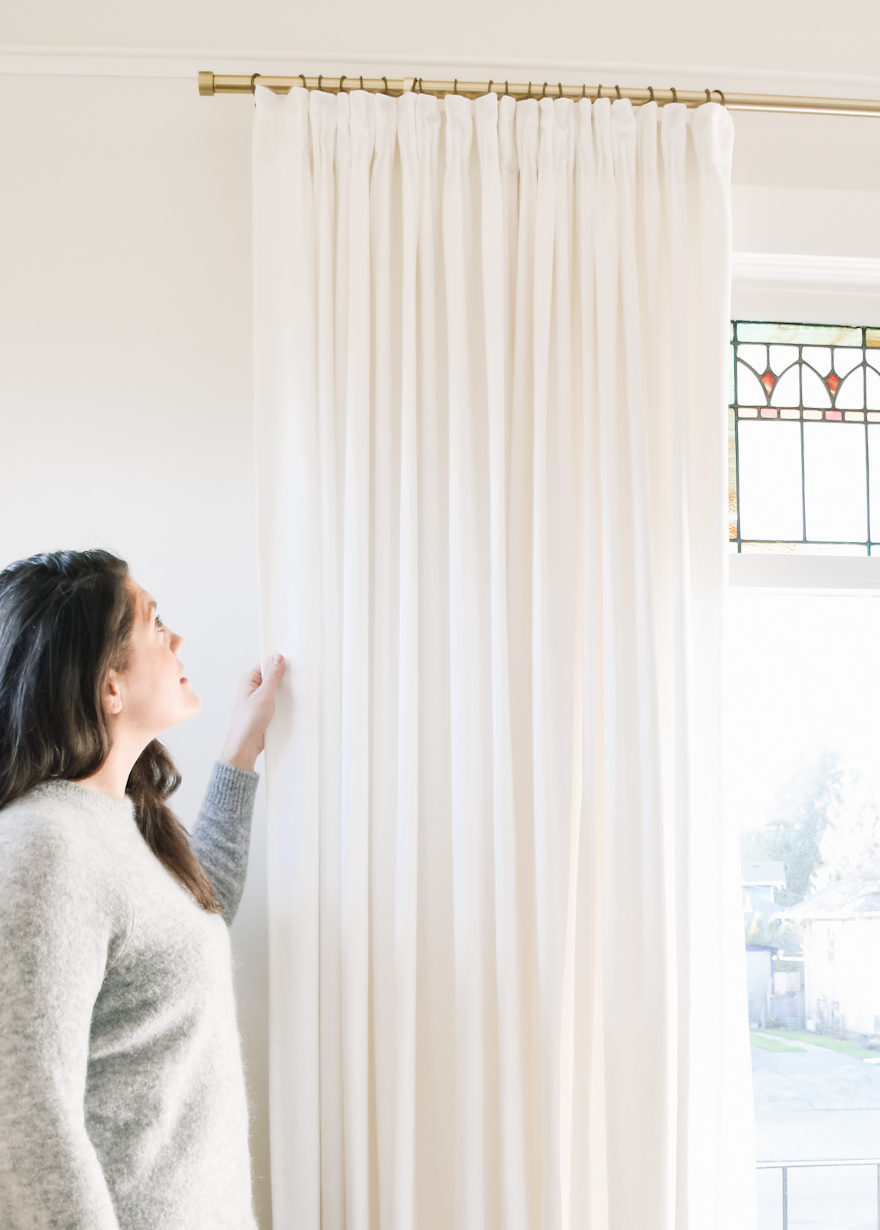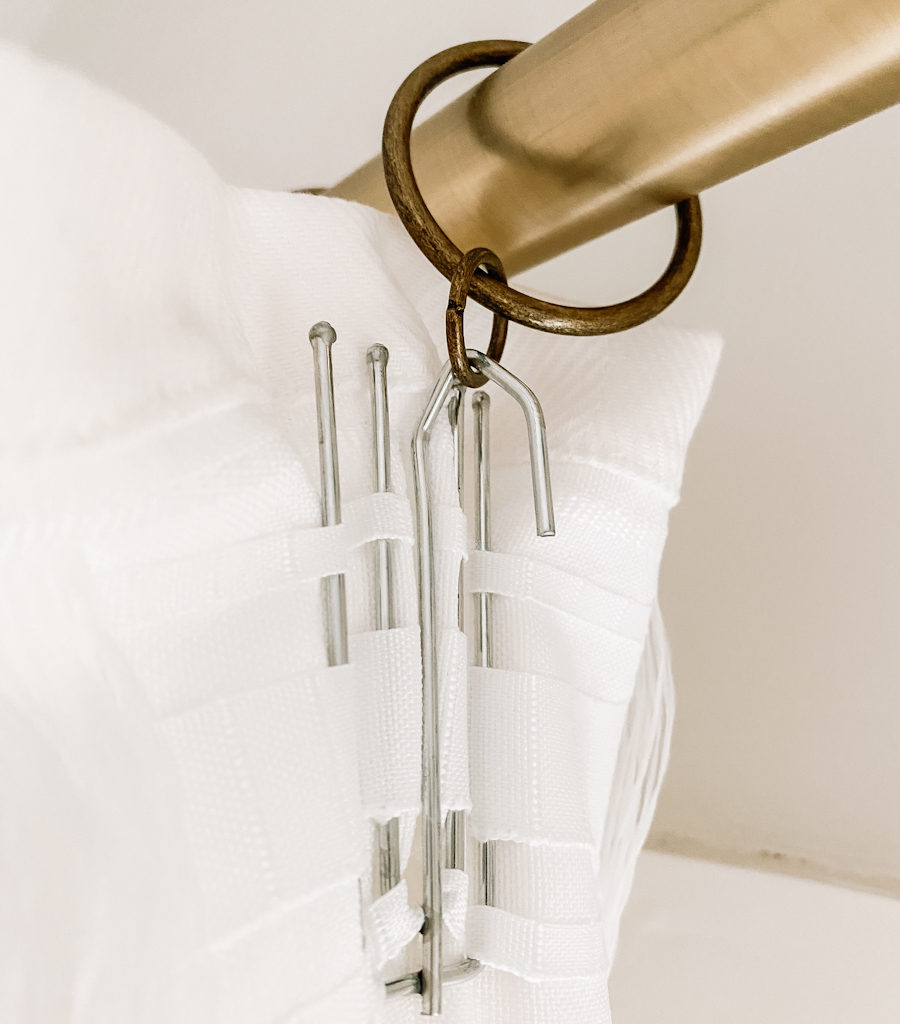If you’ve ever shopped around for drapery for your home, you’ll know that it’s not exactly a budget-friendly task. Now I love and appreciate the beauty of high-end custom drapery, but I’m not about to drop that kind of cash on window coverings.

But being budget conscious does not mean you have to sacrifice on style. I’m all about achieving the look for less, so let me show you how to do just that and get a high-end drapery look on an IKEA budget.
This post may contain affiliate links, and I may earn a small commission at no additional cost to you. As an Amazon Associate I earn from qualifying purchases. You can read my full disclosure here.
HOW TO MAKE IKEA CURTAINS LOOK EXPENSIVE
Supplies:
- curtain rod
- curtain rings with eyelets
- pleating hooks
- pleating tape if you are using curtains that don’t come with it already
CHOOSING A CURTAIN ROD
Be sure to choose a curtain rod length that extends well past your window. Here’s the one I used: brass curtain rod. The drapes should hang so that when they are open the inside edge of the drape aligns with the window casing. Having the drapes extend well past the window opening also gives the illusion of a larger window.
shop curtain rods

MUST-HAVE: CURTAINS WITH PLEATING TAPE
You’ll need to pick curtains that have pleating tape on the header (which is the back of the curtain rod pocket). Fortunately so many curtains come with this! I’ve used the IKEA Tibast curtains for this DIY, but there are many others to choose from. Another favourite source of mine is H&M HOME as most of their curtains also come with pleating tape attached.
If you really want to elevate the look, use two panels per side as I’ve done here for a fuller, high-end appearance.
If you have existing curtains that you’d like to use but they don’t have pleating tape, you can purchase pleating tape separately. This pack comes with both pleating tape & hooks, both of which you’ll need for this project!
shop curtains with pleating tape

CURTAIN RINGS WITH EYELETS ARE ESSENTIAL
This is how your curtain hooks attach to the rod. Choose curtain rings that are 1/4″ to 1/2″ larger than your curtain rod. I’ve used 1-1/2″ curtain rings on a 1-1/4″ diameter rod.

4-PRONG PLEATING HOOKS
If you want the look of a more formal pinch-pleat curtain, be sure to choose pleating hooks with four prongs – this creates three pleats. You can also find hooks with 3 prongs which will create a more informal look of 2 pleats per hook. Both look lovely, it’s all about the look you are going for!
HOW TO CREATE THE PLEATED LOOK
One of the best things about this DIY is how simple it is to achieve this look. Here’s the steps to follow:
1. Hang your curtain rod. I like to go as high as possible, about 6-8″ from the ceiling. Of course this will be dictated by your curtain length, but in general, higher is better. When measuring ensure to take into account that the curtains will end up being slightly longer when attached by hooks and rings than if they were hung by the rod pocket or back tabs.
2. Slide the curtain rings onto the rod. I used 10 rings per panel.
3. Simply insert the curtain hooks into the pleating tape on the back of the panel. I used 10 hooks per panel. Not going to lie, this part is a little tedious, but easy enough to do. Insert the first prong in the 4th slot from the edge, then every 3rd slot until all 4 prongs are in place. For the next hook, skip four slots then proceed to insert a prong in every 3rd slot, repeating this procedure across the panel (see diagram below).
The pleating hooks I’ve used come with single hooks which are used at the very edge of the curtain panel so that it doesn’t droop. Here’s a diagram to better explain it:
Pattern for Pleating Hooks

4. When the entire panel is complete, hang the pleating hooks into the ring eyelets.

That’s the whole process!
If you are using two panels per side, as I did here, you’ll want to join the two panels so they slide together. I did this by using one pleating hook to attach them – two prongs into the end of each panel. You could certainly take it one step further and sew the panels together, but I didn’t bother. The curtains are so full that the break blends seamlessly into the curtains.


And there you have it, a simple way to elevate the look of inexpensive IKEA curtains.
What do you think of the look? If you give this a try, be sure to tag me on instagram!
xo,


